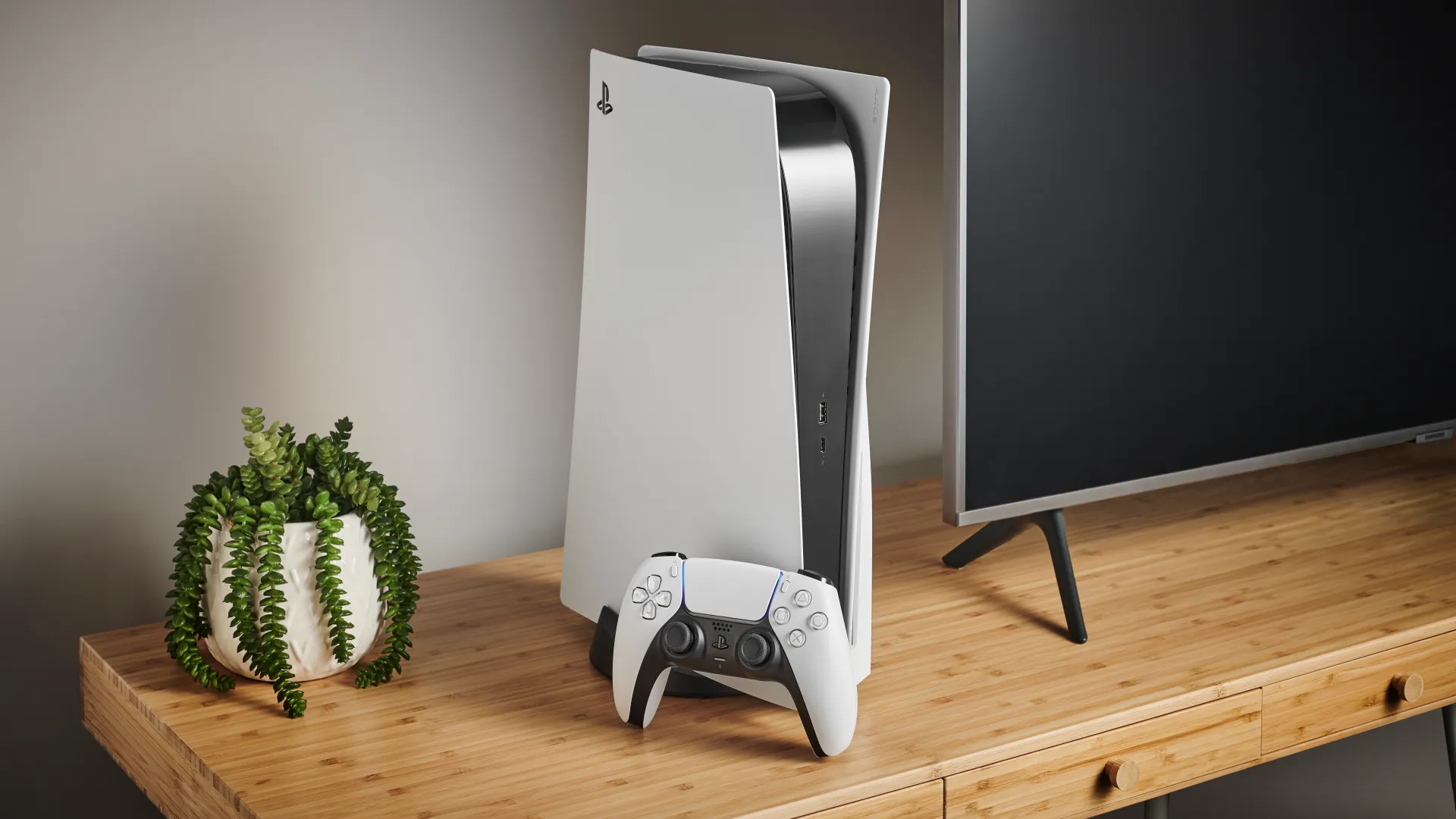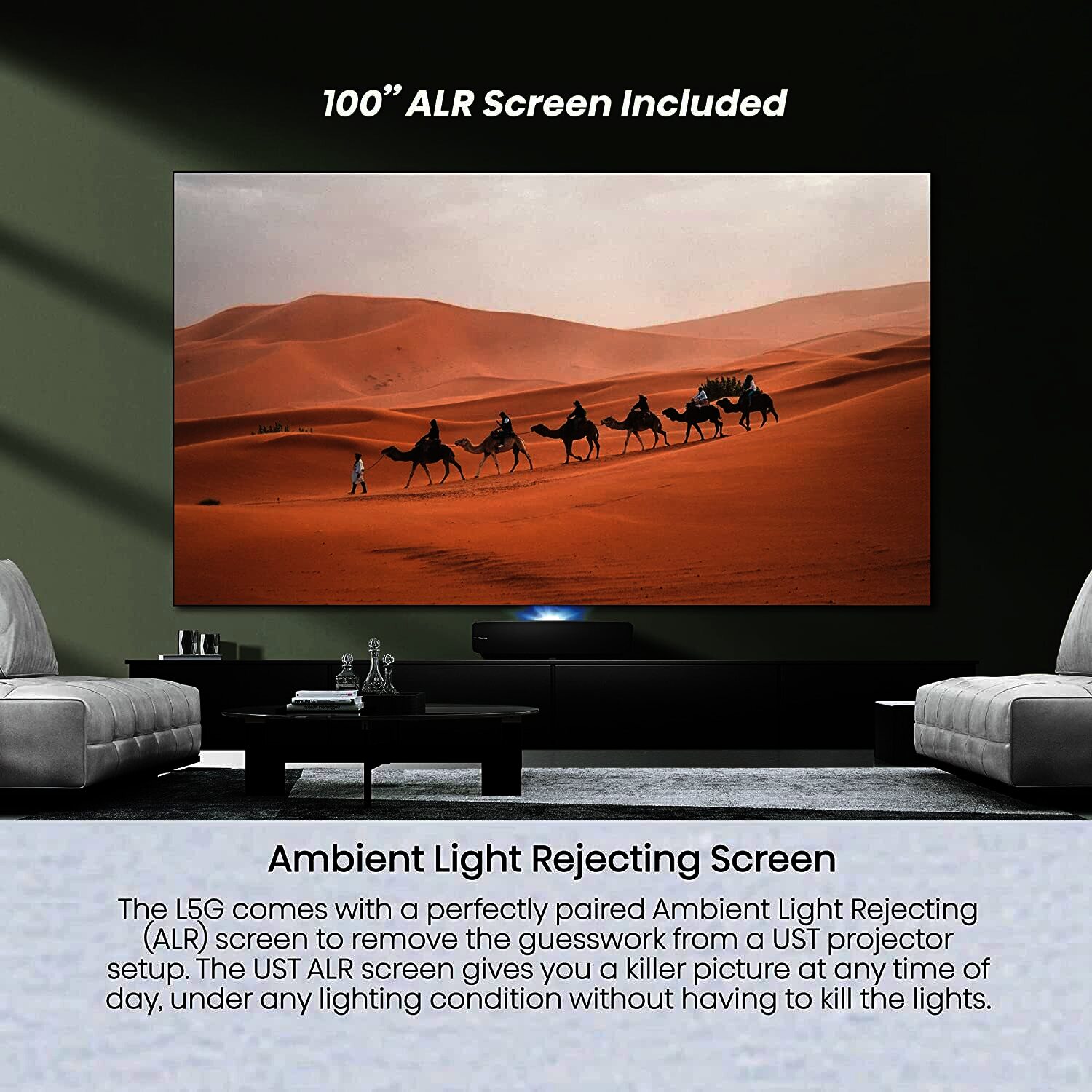OLED vs QLED TV in Nigeria 2025: Ultimate Premium Display Technology Guide
The premium TV market in 2025 is dominated by two revolutionary display technologies: OLED and QLED. These cutting-edge technologies represent the pinnacle of television engineering, offering unprecedented picture quality, vibrant colors, and immersive viewing experiences that transform your living room into a cinematic paradise.
For Nigerian consumers investing in premium television technology, understanding the differences between OLED and QLED is crucial. Both technologies offer exceptional performance, but they achieve stunning visuals through completely different approaches, each with unique advantages that cater to different viewing preferences and room environments.
🔥 Premium TV Technology Overview 2025:
- OLED Price Range: ₦800,000 - ₦5,500,000+ (Premium technology)
- QLED Price Range: ₦600,000 - ₦4,200,000+ (Wide variety)
- Leading OLED Brand: LG, Sony, Panasonic
- Leading QLED Brand: Samsung, TCL, Hisense
- Market Trend: Both technologies becoming more affordable and accessible
- Nigerian Preference: QLED slightly preferred due to brightness and pricing
OLED vs QLED: Core Technology Differences
🌟 OLED Technology (Organic Light-Emitting Diode)
OLED displays use organic compounds that emit light when electricity is applied. Each pixel produces its own light, allowing for perfect blacks and infinite contrast ratios.
How OLED Works:
- Self-Emissive Pixels: Each pixel produces its own light independently
- Perfect Blacks: Pixels can turn completely off for true black
- Instant Response: No backlight delay, instantaneous pixel response
- Wide Viewing Angles: Consistent colors from any viewing position
- Thin Design: No backlight required, ultra-slim profiles
OLED Advantages:
- ✅ Perfect black levels and infinite contrast ratio
- ✅ Exceptional color accuracy and vibrancy
- ✅ Ultra-fast response times (ideal for gaming)
- ✅ Wide viewing angles with consistent picture quality
- ✅ Energy efficient (only lit pixels consume power)
- ✅ Premium design with ultra-thin profiles
OLED Limitations:
- ❌ Lower peak brightness compared to QLED
- ❌ Potential burn-in with static images (much improved in 2025)
- ❌ Generally more expensive than equivalent QLED
- ❌ Organic materials may degrade over very long periods
💎 QLED Technology (Quantum Dot Light-Emitting Diode)
QLED displays use quantum dots - tiny semiconductor particles that emit precise colors when illuminated by a backlight, creating exceptionally bright and colorful images.
How QLED Works:
- Quantum Dot Layer: Nano-crystals convert backlight into pure colors
- LED Backlight: Powerful backlighting system for high brightness
- Color Volume: Maintains color accuracy at high brightness levels
- Local Dimming: Advanced models dim specific backlight zones
- Durability: Inorganic materials for long-lasting performance
QLED Advantages:
- ✅ Exceptional peak brightness (perfect for bright rooms)
- ✅ Outstanding color volume and saturation
- ✅ No burn-in concerns with static content
- ✅ Longer lifespan with inorganic materials
- ✅ Better value across different price points
- ✅ Excellent for HDR content with bright highlights
QLED Limitations:
- ❌ Cannot achieve perfect blacks (backlight bleeding)
- ❌ Viewing angles may shift colors slightly
- ❌ Slightly slower response times than OLED
- ❌ Requires more complex backlighting systems
Best OLED and QLED TVs Available in Nigeria 2025
🏆 Top OLED TVs 2025
LG 55" OLED Evo C3 Series Smart TV
Price: ₦1,674,000
Why It's Exceptional: LG's most popular OLED with perfect balance of features and price for Nigerian families.
- 55-inch OLED Evo display with self-lit pixels
- α9 Gen6 AI Processor 4K for intelligent optimization
- webOS smart platform with all streaming apps
- 4 HDMI 2.1 ports perfect for PS5/Xbox gaming
- Dolby Vision IQ and Dolby Atmos support
- Ultra-slim design complements modern Nigerian homes
LG 65" OLED Evo C3 Series Smart TV
Price: ₦2,484,000
Why It's Exceptional: Large screen OLED perfect for spacious Nigerian living rooms and entertainment.
- 65-inch cinematic OLED experience
- Same premium C3 features in larger format
- Perfect for family movie nights and sports
- Gaming optimization for PlayStation and Xbox
- Advanced AI picture and sound processing
LG 77" OLED Evo G3 Series Smart TV
Price: ₦5,499,000
Why It's Exceptional: Ultimate premium OLED experience with gallery design for luxury Nigerian homes.
- Massive 77-inch OLED Evo Gallery Design
- Ultra-slim profile mounts flush against wall
- α9 Gen6 AI Processor 4K with advanced optimization
- Brightness Booster Max for improved HDR
- Premium One Wall Design mounting system
- Perfect for luxury apartments and mansions
OLED Technology Benefits for Nigerian Homes:
- Perfect for Movie Nights: True blacks create cinema-like atmosphere
- Gaming Excellence: Near-zero input lag for competitive gaming
- Ambient Lighting: Responds beautifully to controlled lighting
- Wide Viewing: Perfect for family gatherings and entertaining
- Energy Efficiency: Lower power consumption important for Nigerian electricity costs
💎 Top QLED TVs 2025
Samsung 65" Neo QLED 4K Smart TV
Price: ₦1,890,000
Why It's Exceptional: Samsung's Neo QLED technology with mini-LED backlighting for incredible brightness.
- 65-inch Quantum HDR 32X for outstanding brightness
- Neo Quantum Processor 4K with AI upscaling
- Quantum Matrix Technology with mini-LEDs
- Motion Xcelerator Turbo+ for sports and action
- Tizen smart platform with all apps
- Perfect for bright Nigerian living rooms
Samsung 75" Neo QLED 4K Smart TV
Price: ₦2,808,000
Why It's Exceptional: Large format Neo QLED with exceptional brightness perfect for big Nigerian families.
- Massive 75-inch premium viewing experience
- Anti-Glare technology for bright room viewing
- Object Tracking Sound+ for immersive audio
- Gaming Hub with cloud gaming capabilities
- Premium build quality and slim design
Samsung 85" Neo QLED 8K Smart TV
Price: ₦4,239,000
Why It's Exceptional: Ultimate QLED experience with 8K resolution and massive screen for luxury homes.
- Incredible 85-inch 8K Neo QLED display
- Neural Quantum Processor 8K with AI upscaling
- Real 8K Resolution with 33 million pixels
- Infinity One Design with ultra-slim profile
- Perfect for mansion-sized entertainment rooms
- Future-proof 8K content ready
QLED Technology Benefits for Nigerian Homes:
- Bright Room Performance: Excellent visibility even with windows open
- Durability: No burn-in concerns for news channels or gaming
- Color Accuracy: Quantum dots maintain colors at high brightness
- Longevity: Inorganic materials for years of reliable performance
- Value Options: Wide range of sizes and price points available
Detailed Comparison: OLED vs QLED Performance
1. Picture Quality Analysis
🌑 Black Levels and Contrast:
| Aspect | OLED | QLED | Winner |
|---|---|---|---|
| Black Level | Perfect (0 nits) | Very Good (0.5-1 nits) | OLED |
| Contrast Ratio | Infinite | 10,000:1 - 30,000:1 | OLED |
| Shadow Detail | Excellent | Very Good | OLED |
☀️ Brightness and HDR:
| Aspect | OLED | QLED | Winner |
|---|---|---|---|
| Peak Brightness | 800-1,000 nits | 2,000-4,000 nits | QLED |
| HDR Performance | Excellent | Outstanding | QLED |
| Bright Room Viewing | Good | Excellent | QLED |
🎨 Color Performance:
| Aspect | OLED | QLED | Winner |
|---|---|---|---|
| Color Accuracy | Excellent | Excellent | Tie |
| Color Volume | Very Good | Outstanding | QLED |
| Wide Color Gamut | 95%+ DCI-P3 | 95%+ DCI-P3 | Tie |
2. Viewing Experience Comparison
👁️ Viewing Angles:
- OLED: Perfect viewing angles (160°+) with no color shift
- QLED: Good viewing angles (140°) with slight color shift at extremes
- Nigerian Home Impact: OLED better for large family viewing arrangements
⚡ Motion Handling:
- OLED: Near-instantaneous response time (0.1ms), perfect for sports and gaming
- QLED: Fast response time (1-5ms), excellent for most content
- Nigerian Content: Both excellent for football and Nollywood movies
🎮 Gaming Performance:
- OLED: Ultra-low input lag, Variable Refresh Rate, perfect for PS5/Xbox
- QLED: Excellent gaming features, Gaming Hub, cloud gaming support
- Recommendation: OLED slightly better for competitive gaming
3. Durability and Longevity
🔄 Lifespan Expectations:
- OLED: 8-10 years with normal use, organic materials slowly degrade
- QLED: 10-12 years with normal use, inorganic quantum dots more stable
- Burn-in Concerns: OLED greatly improved in 2025, QLED immune to burn-in
🛡️ Nigerian Climate Considerations:
- Heat Tolerance: Both technologies handle tropical heat well
- Humidity Resistance: Sealed electronics protect against moisture
- Power Fluctuations: Both require surge protection for Nigerian electrical grid
- Dust Protection: Regular cleaning essential for both technologies
Choosing Between OLED and QLED: Use Case Analysis
📍 Room Environment Factors
🌞 Bright Living Rooms (Large Windows, Daytime Viewing):
Recommendation: QLED
- Superior brightness cuts through ambient light
- Anti-glare coatings reduce window reflections
- Colors remain vibrant in bright conditions
- Perfect for typical Nigerian living rooms with natural light
Best Choice: Samsung 65" Neo QLED (₦1,890,000)
🌙 Controlled Lighting (Dedicated Media Rooms, Evening Viewing):
Recommendation: OLED
- Perfect blacks create cinematic atmosphere
- Infinite contrast ratio for movie-like experience
- Wide viewing angles for family seating
- Ideal for dedicated entertainment spaces
Best Choice: LG 65" OLED C3 (₦2,484,000)
🎬 Content Type Preferences
🏈 Sports and News (Bright, Fast-Moving Content):
Recommendation: QLED
- High brightness enhances sports field visibility
- No burn-in concerns with static logos and tickers
- Excellent motion handling for fast action
- Perfect for Premier League, Champions League viewing
🎭 Movies and Dramas (Cinematic Content):
Recommendation: OLED
- Perfect blacks enhance dramatic scenes
- Accurate color reproduction for filmmaker intent
- Wide viewing angles for family movie nights
- Ideal for Nollywood and international cinema
🎮 Gaming (Interactive Entertainment):
Recommendation: OLED (slight edge)
- Ultra-low input lag for competitive advantage
- Instant pixel response for smooth motion
- Perfect blacks enhance gaming atmosphere
- Both technologies excellent for PlayStation 5 and Xbox Series X
💰 Budget and Value Analysis
Value Comparison by Size:
| Size | OLED Price Range | QLED Price Range | Value Winner |
|---|---|---|---|
| 55" | ₦1,600,000-₦2,500,000 | ₦1,200,000-₦2,000,000 | QLED |
| 65" | ₦2,400,000-₦3,800,000 | ₦1,800,000-₦3,200,000 | QLED |
| 75" | ₦3,500,000-₦5,000,000 | ₦2,800,000-₦4,500,000 | QLED |
| 85" | ₦5,000,000+ | ₦4,200,000+ | QLED |
Maintaining Your Premium OLED or QLED TV
🧹 Daily and Weekly Care
Screen Cleaning (Weekly):
- Use microfiber cloth for gentle dust removal
- Avoid harsh chemicals or paper towels
- Clean in circular motions from center outward
- Use specialized screen cleaners for stubborn marks
Ventilation and Environment:
- Ensure adequate ventilation around TV (6 inches minimum)
- Keep away from direct sunlight and heat sources
- Use air conditioning to control humidity during rainy season
- Regular dusting of vents and ports
💻 Software and Settings Optimization
Regular Updates:
- Enable automatic software updates
- Update streaming apps monthly
- Calibrate picture settings for your room
- Clear cache and temporary files periodically
OLED-Specific Care:
- Enable pixel refresh features
- Use screensavers for static content
- Vary brightness levels to prevent burn-in
- Utilize built-in pixel cleaning cycles
🔧 Common Issues and Solutions
Picture Quality Issues:
- Dim Picture: Check brightness settings, ambient sensor
- Color Issues: Reset picture settings, check source quality
- Motion Blur: Adjust motion processing settings
- Input Lag: Enable game mode for gaming
Connectivity Problems:
- WiFi Issues: Check router placement, update network settings
- HDMI Problems: Try different ports, check cable quality
- App Crashes: Clear app cache, reinstall if necessary
- Remote Issues: Replace batteries, re-pair if wireless
Final Decision Guide: OLED vs QLED for Your Nigerian Home
🎯 Quick Decision Framework
Choose OLED If:
- ✅ You primarily watch in controlled lighting (evening/night)
- ✅ Perfect blacks and infinite contrast are priorities
- ✅ You're a serious gamer requiring ultra-low input lag
- ✅ Wide viewing angles are essential for family viewing
- ✅ You appreciate premium design and ultra-thin profiles
- ✅ Budget allows for premium pricing (₦1,600,000+)
Choose QLED If:
- ✅ Your room has significant ambient light (bright living room)
- ✅ You watch lots of sports, news, or bright content
- ✅ Burn-in protection is important (static content)
- ✅ You want maximum brightness and HDR performance
- ✅ Long-term durability is a primary concern
- ✅ Better value across different price points is preferred
💡 Top Recommendations by Scenario
🏡 Typical Nigerian Living Room (Mixed Lighting):
Recommended: Samsung 65" Neo QLED - ₦1,890,000
- Excellent brightness for daytime viewing
- Anti-glare technology for window light
- Outstanding color performance
- No burn-in concerns for news/sports
🎬 Dedicated Entertainment Room:
Recommended: LG 65" OLED C3 - ₦2,484,000
- Perfect blacks for cinematic experience
- Wide viewing angles for family seating
- Exceptional picture quality in controlled lighting
- Premium gaming performance
👑 Luxury Home Cinema:
Recommended: LG 77" OLED G3 Gallery - ₦5,499,000
- Massive screen for ultimate immersion
- Gallery design for wall mounting
- Premium build quality and aesthetics
- Future-proof features and technology
🎮 Gaming Enthusiast:
Recommended: LG 55" OLED C3 - ₦1,674,000
- Ultra-low input lag for competitive advantage
- Variable Refresh Rate for smooth gaming
- Perfect for PlayStation 5 and Xbox Series X
- Excellent value for gaming-focused features
🔮 Future-Proofing Your Investment
Technology Evolution 2025-2030:
- 8K Content: Gradually increasing, mainly streaming and gaming
- HDMI 2.1: Essential for next-generation gaming and content
- AI Processing: Continuously improving through software updates
- Smart Features: Regular platform updates extend TV lifespan
- Gaming: Cloud gaming and VR becoming more important
Long-term Value Considerations:
- Both OLED and QLED will serve excellently for 8-10 years
- Choose based on your specific viewing environment and preferences
- Premium features justify higher investment for serious users
- Consider total cost including installation and accessories
🛒 Ready to Upgrade to Premium Display Technology?
Discover the complete range of OLED and QLED TVs with competitive prices, authentic products, and professional installation services across Nigeria.
Why Choose Zit Electronics for Your Premium TV:
- ✅ Authentic OLED and QLED TVs with full manufacturer warranty
- ✅ Competitive prices with flexible payment plans
- ✅ Professional delivery and installation services
- ✅ Expert TV selection consultation and room assessment
- ✅ Comprehensive after-sales support and maintenance
- ✅ Latest 2025 models with cutting-edge features
Transform your entertainment experience with the perfect premium TV technology. Whether you choose OLED's perfect blacks or QLED's brilliant brightness, enjoy years of stunning visual entertainment.
Last updated: October 2025. Prices and availability subject to change. Visit Zit.ng for current pricing and special TV promotions.






